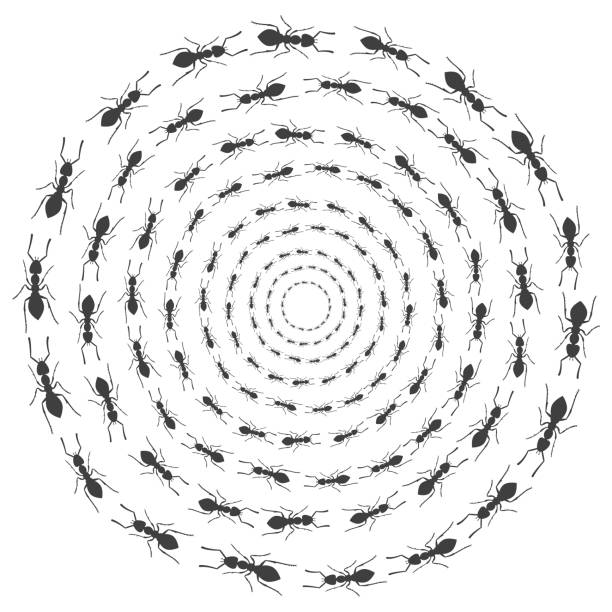
What Does It Mean When Ants Run in Circles?
Have you ever witnessed a trail of ants marching in a seemingly endless circle? This behavior, often observed in urban and suburban environments, has perplexed scientists and homeowners alike. While it may appear amusing at first glance, the reasons behind this peculiar phenomenon are fascinating and could shed light on the intricate social dynamics of these tiny creatures.
To understand why ants run in circles, we need to delve into their complex communication and navigation systems. Ants rely heavily on pheromones, chemical signals that they release into the environment to convey messages to their fellow colony members. These pheromones can carry a wealth of information, including directions to food sources, danger warnings, and even the location of the nest.
Trail Pheromones
When a group of ants discovers a food source, they leave a trail of pheromones as they return to the nest. These pheromones serve as a guide for other ants, allowing them to follow the same path and efficiently collect food. However, if the ants encounter an obstacle that blocks their path, they may become disoriented and start running in circles.
This can happen when the pheromone trail is disrupted, either by an environmental factor such as a gust of wind or by an obstacle like a piece of debris. When ants lose their chemical guide, they may become confused and start following each other in a circular pattern, as they struggle to re-establish the trail.
Other Causes of Circular Movement
While disrupted trail pheromones are a common cause of ants running in circles, there are other factors that can contribute to this behavior:
- Injury or illness: An injured or ill ant may become disoriented and start wandering in circles.
- Pheromone mimicry: Some species of ants produce pheromones that mimic those of other species, which can confuse and disorient ants.
- Predation: Ants may run in circles as a defensive strategy to avoid being captured by predators.
Significance of Circular Movement
Ants running in circles may seem like an insignificant occurrence, but it holds important implications for their colony’s survival:
- Indicators of distress: When ants are disoriented and running in circles, it can be a sign that the colony is under stress or facing challenges.
- Ecological impact: The disruption of ant foraging can have cascading effects on other species that rely on ants for pollination or seed dispersal.
Tips for Dealing with Ants Running in Circles
If you encounter ants running in circles near your home, here are some tips to help them find their way:
- Remove obstacles: Clear away any debris or obstructions that may be blocking the ants’ path.
- Use a gentle breeze: A light breeze can help to disperse the pheromone trails and guide the ants back to their nest.
- Contact a pest control professional: If the ants are causing significant problems or if the circular movement persists, consider contacting a pest control professional for assistance.
FAQ About Ants Running in Circles
Q: Why do ants run in circles?
A: Ants run in circles primarily due to disrupted pheromone trails, which guide their navigation. Other factors like injury, illness, or pheromone mimicry can also contribute to this behavior.
Q: Is it harmful to ants if they run in circles?
A: Yes, if the circular movement persists for an extended period, it can be harmful to ants. They may become exhausted, disoriented, and even die.
Q: Should I be concerned if I see ants running in circles?
A: If you see a few ants running in circles, it’s generally not a cause for concern. However, if you observe a large number of ants behaving abnormally, it may indicate an underlying issue, such as a disrupted colony or infestation.
Conclusion
Ants running in circles is a fascinating phenomenon that reveals the complexities of their social and navigational systems. By understanding the reasons behind this behavior, we can better appreciate the intricate lives of these tiny creatures that play a crucial role in our ecosystems. Remember, if you encounter ants running in circles, a little assistance can help them find their way back home.
Would you like to learn more about the fascinating world of ants?
![Unique antimicrobial activity in honey from the Australian honeypot ant (Camponotus inflatus) [PeerJ]](https://dfzljdn9uc3pi.cloudfront.net/2023/15645/1/fig-2-full.png)
Image: peerj.com

Image: istockphoto.com
How many ants are there? The number is ‘incredibly difficult to comprehend’ | CBC Radio Feb 22, 2011This is a species of army ant, Labidus praedator. These ants are completely blind so they get about by sniffing trails left by the ants in front of them. They, in turn, leave chemical trails of